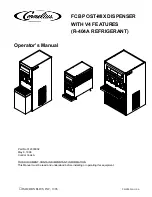
6
Introduction
This section intends to introduce the reader to the fusion technique and to
familiarize him or her to the K1 Prime.
The fusion
theory
Fusion is a technique used to prepare inorganic samples, with a view to analyze
them by x-ray fluorescence (XRF), inductively coupled plasma (ICP) atomic
absorption (AA) or any traditional wet chemistry method. Typical samples include:
cements, ores, slag, sediments, soils, rocks, ceramics, pigments, glasses and
even metals.
A fusion can produce either a small, homogenous solid glass disk (or “bead”) for
XRF, or an acid solution for other analytical methods.
The process of fusion as a sample preparation method exhibits many advantages
over other methods, as it does not produce mineralogy, grain size or orientation
effects and the result is perfectly homogenous.
In sample preparation by fusion, the sample never actually melts. It is merely
dissolved into a solvent. This solvent, generally a lithium borate flux, is solid at
room temperature and must be molten to dissolve anything. This is the only
reason the process requires heat.
Therefore, the peak temperature of a sample preparation by fusion is
determined only by the type of flux, not the type of sample.
A fusion temperature of 1100°C should be considered as a maximum.
Heating above that temperature could cause flux evaporation that could bias the
subsequent analysis.
Automatic
fluxers
Because of the potential risk of manipulating red-hot samples and to increase
repeatability of temperature, mixing and duration, the industry has now adopted
the automated fusion machine as the standard equipment to prepare samples by
fusion.
Summary of Contents for K1 PRIME
Page 1: ...Automatic fluxer 1...
Page 2: ......









































